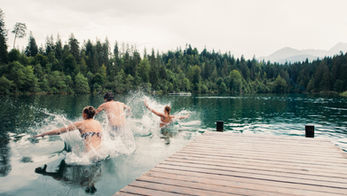
Rips and Currents
Safety Factsheet #
17
Rip currents are one of the greatest, and most common, hazards in Open waterways; such as rivers, estuaries and beaches. On average, rip currents are responsible for at least 45 drowning deaths in Australia each year. In addition, lifesaving organisations perform countless rescues each and every year to assist swimmers who have been caught in currents.
Rivers, creeks and many other inland waterways are natural channels of water which normally flow towards the sea or other bodies of water such as lakes or reservoirs. Tributaries, which are supply channels to rivers, are smaller flows of water created from rainfall, surface run-off and ground water. There are several names given to tributary water flow, including streams, brooks and creeks.
Estuaries are the tidal mouths of rivers (where rivers meet the sea) and these can create complex and dangerous currents. The often-murky water of estuaries is influenced by fresh river water, saline sea water and coastal conditions, including tide and wave motion. These influences contribute to one of the most prominent characteristics of estuaries, which is sedimentation of the waterbed. At low tide, the thick sediment is exposed. Estuaries can also flow against incoming waves at the estuarial mouth, causing a rip current (or in other words, a current travelling out to sea).
Related Items
Explore deeper into our campaign messages to learn more



